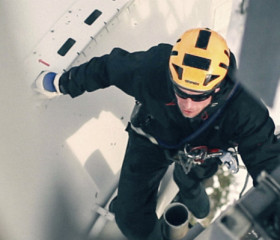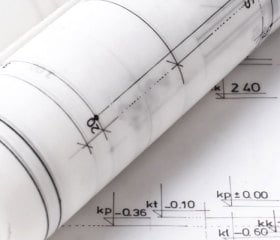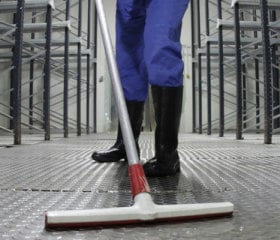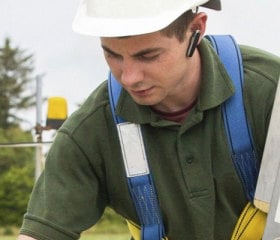
Small accidents collectively can have a big impact; reduce their occurrence in the workplace.
Slips, trips, and falls can be high frequency events. Slips and trips may have a small impact individually, but occur often enough to create large repercussions, and should therefore receive attention from employers and employees alike to prevent their occurrence. Some falls can be fatal, and as such demand thorough analysis, adequate control measures and regular review. We recommend everyone in the organisation participates in General Awareness Training (Slips, Trips and Falls).
Floor area and workstations should provide sufficient space for the comfort of your workers. It is essential that relevant legislation and codes of practice are met. At least two alternative exits need to be present in any location that workers are present. In addition, where practicable, equipment should be adjusted so that left-handed personnel can operate it safely.
Suitable clearances for access and egress should be provided for the safety of your workers. Adequate clearance (say, at least 600mm) should be provided between equipment, structures and materials for access. Walkways and access ways should be marked clearly and of sufficient width to allow for traffic and emergency evacuation. Changes such as machine guarding barriers cannot restrict access ways.
Non-slip mats or other non-slip surfaces should be installed on all slippery, or potentially slippery, floors and stairs. Care should be taken, however, to ensure mats do not present a trip hazard to personnel.
Portable signs (e.g. “Caution. Wet Floor” or “Caution. Spilt Oil”, etc) should be used for all locations with a temporarily slippery floor.
Provide non-slip footwear to personnel that are required to work in areas with slippery surfaces.
Specific work instructions should be in place and signs posted to instruct personnel on the need for immediate clean up of minor spills that can cause slips and falls.
Appropriate arrangements should be established to prevent incidents involving hinged doors, where opening of the door may inadvertently harm a person on the other side of the door.
Large glass panels should be marked, or otherwise highlighted, to prevent accidental collisions.
All fixed platforms, walkways, stairways and ladders should be designed, constructed and installed in accordance with the current version of Australian Standard AS 1657.
Platforms should be nominally horizontal. Where drainage is required, the slope should not exceed 1 in 35. Walkways may have a slope up to and including 20 degrees.
Platforms, walkways and stairways should be provided with guard rails and, where required, toe-boards.
Except where otherwise approved by the regulatory authority, the vertical clearance above platforms and walkways should be not be less than 2000mm.
All walkways and stairways should be kept free of obstructions and any possible trip hazards.
All fixed platforms, walkways, stairways and ladders should be kept free of oil, grease and other slipping hazards
Stairways should be provided with landings at all points of access and with intermediate landings, as required. The length and width of landings should be not less than the width of the stairway. Stairways should be provided with continuous handrails, as required.
Fixed ladders should have adequate clearance from other objects, should be provided with rails, landings (with the distance between landings not exceeding 6 metres), cages (where required) and should have rungs of sufficient strength.
Barrier tape should not be used as the only means of barricading. Such tape may only be used:
All trenches, excavations, the open sides of all floors, floor openings, stair wells, roofs, platforms, walkways from which a person can fall any distance should be adequately barricaded. Barricades should also be installed wherever there is an area of danger including crane work, overhead activities, possible falling objects or other hazardous locations.
Barricading should provide a clear visual warning and should be of bright or contrasting colours.
Unless they are involved in the work carried out in the barricaded area, personnel should not enter behind barriers and should stay clear of the area.
The information on this site is of a general nature only. It does not take your specific needs or circumstances into consideration. You should look at your own situation and requirements before making any decisions.

3 min read
3 min read
Falls from heights account for many injuries and fatalities in Australia - nearly all of these are preventable...

3 min read
3 min read
Hiring a worker with disabilities requires a little extra consideration and planning to ensure the workplace is safe....

1 min read
1 min read
Effective housekeeping can reduce and remove many commonplace risks to your employees and business....

2 min read
2 min read
Ensure optimum safety for workers working on elevated platforms with our handy guide....
26 Park Street
South Melbourne
Melbourne VIC 3026
Australia
P. O. Box 23
Telerah
NSW 2320
Australia
Suite 25 Ground Floor
185-187 High Street
Freemantle
WA 6959
Australia
P.O. Box 306 Black Rock VIC 3193 Australia